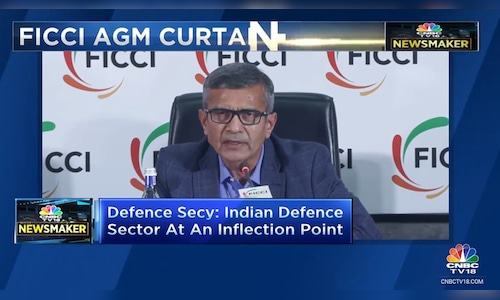
Speaking at FICCI’s 97th AGM and Annual Convention, Singh said that 75% of India’s current defence capital expenditure (capex) is now directed towards domestic procurement, marking a significant increase from 60% just three years ago.
“The defence industry in this country is at an inflection point. It’s reached a kind of a critical mass, where we now have significant volumes being produced indigenously,” Singh remarked, adding that domestic production volumes have tripled in the past decade, while exports have surged 31-fold.
“The value of production in this country has gone up by three times over the last 10 years or so, exports have gone up by 31 times, and our focus increasingly has been on ensuring that we spend our capex within this country. The ratio we originally set out three years back was about 60% to be spent within India, 40% outside. The ratio for the current year has now been enhanced further to 75%. We intend to double down on that indigenisation exercise that we are doing,” he added.
Singh acknowledged the challenges of indigenisation, noting that while it may be easier to procure defence equipment abroad, self-reliance ensures long-term strategic autonomy.
“We intend to double down on that indigenisation exercise that we are doing. In some ways, it’s a painful process, because it is easier to simply buy things abroad… But in the long run, it detracts from your ability to withstand supply chain shocks, some of which we are actually facing today in the context of some of our systems,” he said, citing delays in S-400 missile system deliveries due to global conflicts.
Key priorities include indigenously designed, developed, and manufactured (IDDM) projects, with the Defence Research and Development Organisation (DRDO) playing a pivotal role. Singh mentioned artillery technologies developed by DRDO that will soon be manufactured at scale through partnerships with private companies. He also highlighted the success of the C295 transport aircraft collaboration with Airbus as a model for future initiatives.
“Our top priority will be on what we call IDDM, which is indigenously designed, developed, and manufactured. You’ll probably see some cases where DRDO technology, private partners will come in, and we’ll be manufacturing that equipment at scale. The C295 model, where we have Airbus coming in along with the private sector partner, is a fairly strong template, and we could probably do a few more of those,” Singh stated.
While public sector undertakings (PSUs) currently account for 70% of domestic production, Singh expressed optimism about increasing private sector participation to achieve a balanced 50-50 contribution in the coming years.
“In time, the intention is to increasingly bring in the private sector. Right now, in the domestic value that we produce, about 70% is by our 16 public sector undertakings… The intention is increasingly to make it about closer to 50-50, and I’m sure the private sector is going to step up in that direction,” Singh said, adding that the defence sector is poised for a $20-$25 billion annual expenditure over the next decade.
“Exciting times are ahead,” Singh concluded, positioning India as a burgeoning global hub for defence manufacturing.



